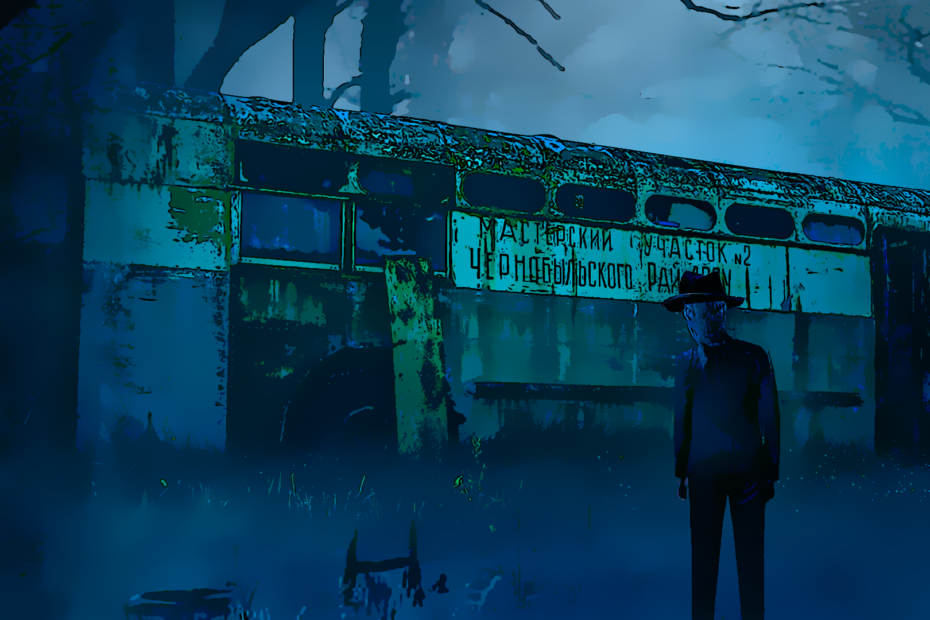A good Creepypasta occupies the same space as ghost stories by the campfire and urban legends told in the schoolyard. It should create a lingering sense of unease that will stay with your audience, merging the familiar with the unsettling.
While the inclusive genre means there is no right or wrong way to tell your tale, here are some tips on how to write a good creepypasta story.
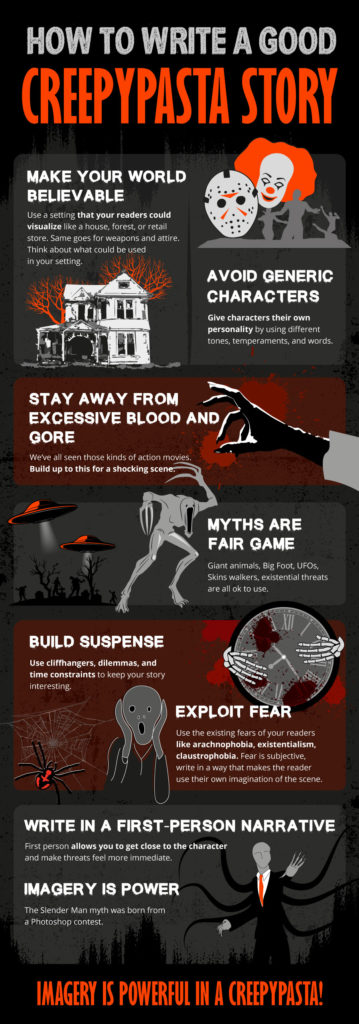
1. Use real-world locations
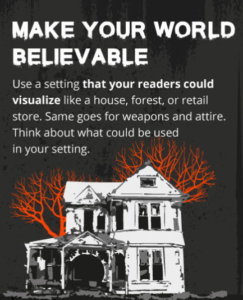 One of the most effective ways to really creep your reader out is to blur the line between your story’s world and reality. By fusing familiar places, objects, and people with the paranormal, you create a sense that the creepy, supernatural, and downright horrific is infringing on our own world.
One of the most effective ways to really creep your reader out is to blur the line between your story’s world and reality. By fusing familiar places, objects, and people with the paranormal, you create a sense that the creepy, supernatural, and downright horrific is infringing on our own world.
By using a real-world location as your central setting, your reader will have a sense that things are a little closer to home than if you were to use a fantasy or fictional location. Mary Shelley’s Frankenstein, for example, uses the setting that she and her esteemed friends found themselves when she first penned the idea for her novel, a stormy Lake Geneva. Geneva serves as the setting for the monster’s most violent acts and, for her immediate audience, would have made the telling even more spooky.
More recently, horror authors have used the real-world location device to encroach on the reader’s space. Stephen King, for instance, created the fictional town of Derry in IT but set it in the real state of Maine. This merging of the real and the unreal is unsettling for a reader and makes them unsure to what extent this world can be trusted. With effective writing, we can use this disconcerted feeling in creepypasta to keep readers on their toes.
For your modern reader, the setting doesn’t necessarily have to be a physical location either. Virtual spaces such as video games, chat apps, and conferencing software can all be used to invade the personal space of your reader, creating a sense of imminence. Movies such as Unfriended used Skype, for instance, to great effect, and Hellraiser 8 used an MMORPG to a lesser extent. With most people using an electronic device to read, watch, or listen to creepypasta, this is a particularly good way to engage a modern audience.
Creepypastas such as Lavender Town Syndrome and Snow on Mt. Silver have found success relying on nostalgia too, using the familiar locations of Pokemon games.
Of course, using actual locations places limits on objects and people too. While creativity is encouraged in Creepypasta, it’s hard to build suspense if your reader is still trying to envision fictional objects, clothing, or weapons.
2. Give your characters some personality
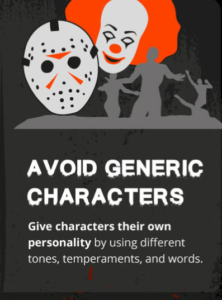 The characters that occupy your creepypasta’s world are typically the most important aspect of your story.
The characters that occupy your creepypasta’s world are typically the most important aspect of your story.
Characters not only act as proxies for an audience to experience the environment in which your creepypasta takes place, but also give insight into motivations, feelings, and thoughts that can add texture and depth to a scene.
Good characters are not cardboard cutouts. Even in a short story like a creepypasta, there should be a sense that a character has a history and lifetime of experiences behind them. Failure to do this results in uninteresting characters with one-dimensional personalities that are essentially unbelievable.
A believable character, therefore, elevates the creepiness of your story. If both the environment and the character could be real, the reader is not taken out of the story and, instead, goes with it.
Believability comes as a result of personality. We are all different and react differently to situations. Defining your character’s personality will help you write believably, therefore, as you will already know how they would react.
Developing a character for creepypasta involves signposting personality through devices such as how they answer the telephone, how they react to something unexpected, the way they dress, or the words that they use.
If a character is something of a coward, for example, it would be out of character for them to enter a supposedly haunted building of their own accord. Instead, you would need to fabricate a situation in which this person finds themselves there, such as a financial incentive, or having no prior knowledge.
Remember, though, this is not a novel. You do not need to bluntly describe your character’s personality. Let their actions and words, instead, tell the audience what they need to know. Your reader will fill in the gaps and flesh out the character themselves.
For example, the following is succinct, but is heavy-handed in dictating how the audience should interpret a character’s personality:
“Jesse was a meek and mild teenager and had no friends.”
Instead, personality can be introduced through behavior:
“Jesse walked past the group of teenagers with his head down, making sure not to make eye contact. He was heading for the library where he was going to escape, once again, into the worlds of his books.”
3. Don’t overuse blood and gore
 Blood and gore are essential components to many creepypastas, but it is often used as a way to try and shock a reader, to no avail.
Blood and gore are essential components to many creepypastas, but it is often used as a way to try and shock a reader, to no avail.
We live in an age where the sight and description of blood and viscera are commonplace in films, TV, and books. And while some people do have a natural aversion to anything gory, most creepypasta readers will have heard it all. Expecting your story to scare your audience through the introduction of these elements will most often be met with failure.
That is not to say blood and gore have no place in creepypasta. Stories such as “The Blood Canvas” use visceral imagery to great effect. There, blood is an integral part of the story, revealing the motivations and inner turmoil of the narrator, rather than simply as a device to shock readers. Classic horror authors such as Clive Barker have also relied on gore to unsettle readers such as in his novel, The Hellbound Heart. In the book, the gore seen in the Hellraiser movie adaptations is still present. However, the gore is described plainly, with a matter-of-fact tone, as if coincidental to the other events taking place. This creates an almost existential tone to the writing, making the reader disturbed by the lack of focus on something so visceral.
If you are relying on blood and gore, then, to scare your reader, your story and characters are likely not strong enough. The scares should come from the implications and cause of the violence, not the violence itself. You should be scared of what’s causing the blood, not the blood itself.
Looking to vintage horror, again, this is demonstrated masterfully in the original Halloween movie. Michael Myers butchers five people in the film and is regarded as one of the scariest movies ever made. And yet, the movie did not feature blood. Instead, the inhuman behavior of the killer and the fear of his victims are used to creep the audience out.
A good creepypasta should do the same, using blood and gore only when appropriate and as a way to enhance a story’s creep factor, without becoming overly dependent on it to shock a reader.
4. Animals, monsters, and cryptids are fair game
 While keeping your characters and environment convincing is important, creepypasta writers should not be afraid to introduce strange creatures into their stories.
While keeping your characters and environment convincing is important, creepypasta writers should not be afraid to introduce strange creatures into their stories.
A good creepypasta does, indeed, anchor itself in the familiar. But it’s the introduction of something unfamiliar into a believable world that will give your reader the creeps. While psychological creepypasta tends to be more in vogue, there is plenty of room in the creepypasta space for a good monster story.
Creatures such as monsters, ghosts, mutants, aliens, cryptids, and terrestrial animals are all ways to introduce an intrusive element into your creepypasta.
Just like with blood and gore, however, the modern creepypasta reader will be somewhat harder to disturb and do not scare too easily. It’s important, then, to try and add something new, introducing a new concept or spin on existing ideas. An alien species simply abducting someone, for example, is not necessarily something that will hold your reader’s interest. No matter how good your writing, the idea is just too well-worn.
Your monsters and scenarios surrounding them should, therefore, introduce an unexpected element. This doesn’t have to be something that turns the monster genre on its head, but it should offer the reader something novel.
The Rake, for example, is a classic monster that leans on familiar tropes proven to induce fear in readers. Whether it’s appearing at the bottom of your bed or stalking you in the dark of the woods, the Rake’s lore includes traditional elements. Enhancing the creepiness of the Rake, however, is its unpredictable behavior. Not knowing whether the Rake will attack or simply prance around upon being spotted keeps the reader on edge.
This can also be seen with cryptids such as the Wendigo skinwalker from the classic creepypasta Anansi’s Goatman which successfully incorporates familiar mythology with psychological horror. Whether deliberate or not, the story is written haphazardly in a style befitting its original 4Chan audience. As a shapeshifter, the Goatman’s true monster-like appearance is not where the creep factor lies. Instead, it’s the sowing of distrust and paranoia that the cryptid causes within the group that creates the real scares.
5. Build Suspense
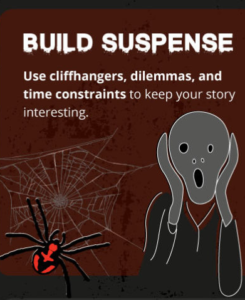 Creating suspense is one of the more difficult things to achieve when writing, but is one of the best methods of producing a timeless creepypasta that captivates readers.
Creating suspense is one of the more difficult things to achieve when writing, but is one of the best methods of producing a timeless creepypasta that captivates readers.
Suspense not only makes scares hit harder, but they keep your reader engaged throughout the story. Almost all creepypasta stories involve a certain amount of suspense because of this. While both writers and readers are often eager to get to the good stuff in a story, it’s the delivery and the telling of it that dictates how effective your creepypasta’s climax is.
In horror, suspense is typified by the uneasy feeling that something bad is going to happen. While it may not be clear what or to whom, the creepypasta reader should have the nagging feeling something is not quite right and things are about to go drastically wrong.
The most effective ways to generate this suspenseful atmosphere to your creepypasta are to use a combination of the following narrative elements:
Introduce conflict
Your characters should encounter difficulty and have to overcome obstacles. This can be as simple as managing to run away from a creature or killer hunting the protagonist before encountering more trouble. Conflict can also be a little more psychological, such as the introduction of a dilemma, where a character has to commit an evil act or face a greater evil in turn or even competing desires.
Keep your sentences short in suspenseful scenes
Shorter sentences give a brisker feel to a scene and make the story move along at a swifter pace. When you’re looking to encourage a sense of tension, doing away with extraneous detail focuses the reader’s attention and mimics the character’s mindset.
Keep the stakes high
The reason a lot of creepypasta writers put characters in perilous situations is that suspense is at its highest when lives are on the line. If a character’s life is in danger, the stakes are at their highest. The reader will wonder how (and if) they will escape and – with good writing – empathize with the character’s position.
6. Use People’s Phobias
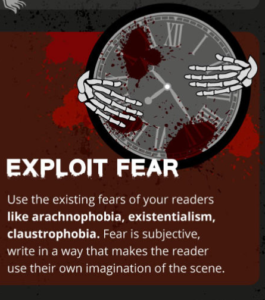 Almost all of us have a phobia; something that we have to turn away from and instills an instinctive repulsion within us. For some people, it’s obvious fears such as heights or snakes and spiders. For others, it’s perhaps something irrational, like certain textures or everyday situations.
Almost all of us have a phobia; something that we have to turn away from and instills an instinctive repulsion within us. For some people, it’s obvious fears such as heights or snakes and spiders. For others, it’s perhaps something irrational, like certain textures or everyday situations.
When it comes to creepypasta, we can utilize some of the more commonplace phobias as a shortcut or hack to instill a sense of repulsion and dread in our readers.
Trypophobia, for instance, is an aversion to clusters of small holes and bumps. While not a universal phobia, it tends to trigger a sense of revulsion in a great many people. Through descriptive writing, a similar feeling can be invoked in a reader. For example, a monster with irregular clusters of openings across its flesh or the description of a decomposing animal corpse bursting with holes.
Similarly, many people have claustrophobia, the fear of confined spaces. A regular trope used in horror is the idea of being buried alive. This works at inducing fear in audiences due to our ability to imagine ourselves in that situation and the common fear of being stuck in a small space. Creepypastas such as Claustrophobia have used this device effectively in combination with narrative twists to keep the story fresh.
More unusual phobias we tend not to know we have are also good at scaring your readers. While not strictly a creepypasta, the Japanese folktale of Kuchisake-onna reveals we have a natural phobia of mutilation. The story tells the tale of the beautiful wife of a samurai that had her mouth slit from ear to ear for committing adultery. Upon her death, she became a vengeful spirit, an onryo, and – according to urban legend – she can still be encountered today. Covering her mouth with a fan, handkerchief, or surgical mask, Kuchusake-onna will ask her victim if she is pretty. Depending on your answer, you will be either be mutilated to look like her or be killed.
The story works because it plays on multiple phobias. Firstly, we fear for our life, and a fear of death is something almost everyone understands. Secondly, we fear her mutilated appearance. And finally, most people have a natural phobia about becoming disfigured in some way.
7. First-Person Narrative is King
 As with all storytelling, there is no right and wrong way to write a creepypasta. However, telling the story from a first-person perspective suits the genre particularly well and appears to chime better with readers.
As with all storytelling, there is no right and wrong way to write a creepypasta. However, telling the story from a first-person perspective suits the genre particularly well and appears to chime better with readers.
This style of narration is useful for blending reality and fiction, too. A lot of good creepypastas will use forum-style posts and online messaging formats to give the impression that the story is pulled straight from the web somewhere. This creates doubt in the reader’s mind that the story is fiction.
Narrating from the protagonists perspective gives three unique benefits to your creepypasta writing:
You can withhold knowledge from your reader
First-person writing can be used to develop tension through the withholding of information from your reader. Whereas an omnipotent narrator would be able to describe what’s behind a rattling door or what is hounding a group of teenagers through a cornfield, in the first person, the suspense is maintained.
A reader, therefore, won’t be privy to any information other than what your protagonist is.
Readers can gain an insight into the thoughts and feelings of your protagonist
Writing from your main character’s point of view also means you can convey how they are feeling at that particular moment. While this should not be overused, having your protagonist describe their inner-state is a way to make sure your reader knows the gravity of a situation.
You can also use this perspective to foreshadow events for your reader or confound their expectations. With the narration effectively being the character’s thoughts, you can deliberately mislead your audience due to their bias and events being filtered through the narrator’s lens.
Captivates your audience
First-person narration can be used to drag the reader into the midst of the action too, especially when combined with the present tense. Hearing and seeing everything the protagonist does, the reader feels closer to the events taking place. When this involves the types of situations in creepypasta, it can elevate the scare factor for your reader as they may even feel as if they are the narrator.
8. A Good Visual Helps Readers
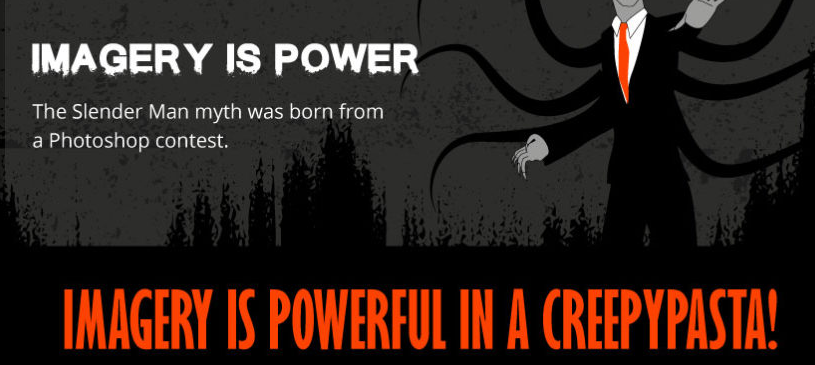 For some creepypastas, however, visuals and the appearance of your creature can be everything.
For some creepypastas, however, visuals and the appearance of your creature can be everything.
While good writing should not depend on images to instill a feeling within a reader, Creepypasta is a different beast. As a modern genre, you should not be afraid to include a good image to help enhance the believability of your story.
The close but not quite human like appearance of slenderman for example, is perhaps the most effective use of visuals in Creepypasta born of a photoshop contest on the Something Awful forums. This icon of the genre has gone on to capture the imagination of the community. Now, almost every fan-made story is accompanied by a disturbing image of the elongated figure looming in the background. Not only is Slenderman’s appearance in itself disturbing, but the accompanying stories bolster the feeling of unease through the description of the creature’s seemingly passive nature. Readers consider Slenderman a threat, but the visual and the writing do not necessarily explain in what way. Many photographs even have children holding the hand of Slenderman affectionately.
The accompanying visual for The Rake creepypasta, is equally unsettling. While the form of the creature is almost human, its eyes, mouth, and extremities confound our expectations. The visual for the story, The Backrooms does not even have a supernatural element but instead implies something hidden around corners that you cannot see, drawing the reader in.
A good creepypasta visual, therefore, will have the appearance of being real to your reader but defy their preconceived notions.
If using a modern medium in your creepypasta such as videogames, you can also include screenshots that will capture your audience’s imagination. A game like Minecraft, for instance, is familiar to millions around the world. The blocky world and the in-game model of “Steve” are well known, with many of us having fond and pleasant memories of inhabiting the virtual worlds of minecraft the creepypasta, Herobrine
uses this familiarity with Minecraft to upset the expectations of readers. Not only is Herobrine a rogue element in a well-known environment that readers normally feel comfortable in, but the model appears similar but slightly “off.”
The same technique is used with the creepypasta Ben Drowned with the character Link from the Legend of Zelda games appearing and behaving differently in-game to what readers expect.
While these tips on how to write a good creepypasta story should help you create something spooky, rules are meant to be broken. The genre is great for experimenting with the form of writing, so get writing and go scare some readers!

